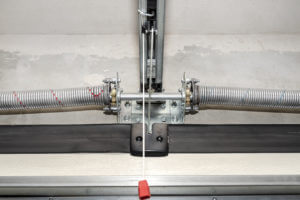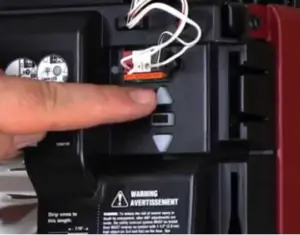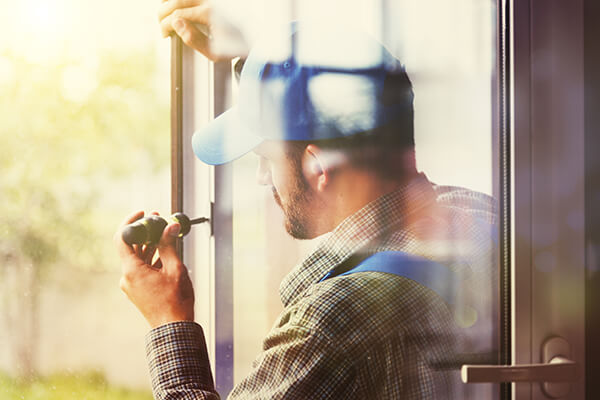You use your garage door nearly every day, likely multiple times a day. Keeping your garage door and garage door opener maintained and functional is key to its longevity and your safety. If you’re looking to better understand what Services Riverhead Building Supply has visit the Installation Services page here
Garage Door and Opener Maintenance and Repair
There are a few things a homeowner can safely do to ensure proper garage door function. Let’s start with some basics and review the key components of your garage door and garage door opener.
Garage Door Tracks and Rollers:
Both the metal rails or tracks, made of steel, which the garage door rollers ride along are a key component to smooth operation of your door. It is important to keep these clean and clear of debris. The best way to clean them is with a soft, lint-free cloth damped with water or gentle household cleaner and wipe along the interior of the track. The garage door can get misaligned if debris is caught in the rails or if the garage door was installed improperly or is imbalanced causing screeching, scratching or scraping noises upon use. If these noises persist, it is recommended to call a garage door service technician to inspect and make appropriate repairs and adjustments – call here 631-591-7810 or complete an appointment form here and someone will contact you.
Garage Door Cables:
These cables do a lot of the heavy lifting – literally! These long strands of galvanized steel rope help lift the door, which can weight up to 200 pounds. These cables connect to the large springs that lift the door. Without these cables, or a broken cable, will not allow the door to open – becoming one of the major issues that can cause a garage door to become stuck closed. Garage door cable replacement and repair should be left to the professionals as they interact with the strong garage door springs that store a lot of energy and can cause harm to the novice repair person.
Garage Door Springs:
Springs are the power behind the door operation. When in good condition you can lift the door easily as the springs provide the counterbalance and tension to give you an assist. If a garage door spring breaks or becomes disabled the garage door becomes impossible to open. Replacing garage door springs on your own is dangerous. The springs are under tremendous tension that can unwind and cause serious injury. Call a professional to replace garage door springs.
Garage Door Remotes and Keypads:
If either the remote or keypad are not functioning properly the first order of business is to check the batteries. If the garage door remote still does not appear to work, check the manufacturer’s instructions on how to train or ‘program’ your remote control – search for instructions online if you do not have paperwork handy. First, you will need to safely access the garage door opener motor to press the ‘Program or Learn’ button to initiate programming mode; usually an LED light will signal the unit is prepped. Then the button on the remote is pressed to make a connection. This is the basic idea, check your brand and find specific manufacturer instructions online. If your efforts fail or the remote/motor still does not function, call our local garage door service technician to troubleshoot more options or set up an appointment at 631-591-7810.
Garage Door Weather Stripping, Sweep or Bottom Seal:
This is the soft, flexible material that compresses when the door closes, sealing the gap along the floor to keep out water, dirt, cold and critters. If debris and air are getting in underneath your garage door, likely the bottom seal or weather strip is in need of replacement. This might be the only repair a do-it-yourselfer can safely manage. Of course if you have multiple issues with your garage door, the best course of action would be to contact an expert that can address all issues on one visit.
- First you need to measure the width of your garage door and purchase a roll of corresponding size bottom weather strip or rubber seal.
- Next, the garage door needs to be securely positioned in about an 80% open position so you have access from side to pull the sweep out of the astragal so it passes in front of the door tracks or rails.
- There is likely a screw a few inches in on each side along the bottom that is holding the current weather strip in place. These two screws should be removed and set aside to reinstall later.
- Pull out the old rubber strip from the side pulling evening and slowing. Sometimes the strip is so worn or damaged it can be pulled out from the bottom of the door. Cutting along the entire bottom can assist in fast, easy removal as well.
- Cut your new garage weather strip to the exact width of the bottom of the door. To facilitate installation give coiled rubber strip a soak in water and dish soap.
- Curve the weather strip into a ‘U’ shape with the ribs on the outside and start to feed into one side of the astragal of the door (metal channels at bottom that rubber weather strip is fed into). This can be most efficient with two people, one feeding the strip in and the other gently pulling it across.
- Last step is to replace the two screws, one on each end, to secure the weather strip in place.
If you find you have multiple concerns with your garage door and opener, feel free to call our installation team of experts for a consultation at 631-591-7810 or complete a request form here.






